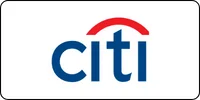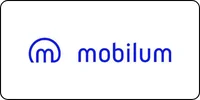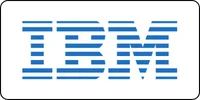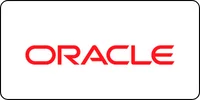Oracle SQL Course








Oracle SQL certification course
What will I learn?
- Understand the basic concepts of relational databases and SQL.
- Write SQL queries to retrieve data from an Oracle database.
- Use SQL functions to perform calculations and manipulate data.
- Create and manage database objects such as tables, views, and indexes.
- Insert, update, and delete data using SQL.
- Implement advanced SQL techniques for complex queries.
Requirements
- Basic understanding of database concepts (helpful but not required)
- Familiarity with any programming language (helpful but not required)
Oracle SQL Course Content
- Introduction to SQL and Oracle Database:
- Overview of SQL and its importance in database management.
- Introduction to Oracle Database architecture.
- Installation and setup of Oracle Database.
- Basic SQL Commands:
- Writing and executing simple SQL queries using SELECT, INSERT, UPDATE, DELETE.
- Filtering data using WHERE clause.
- Sorting data using ORDER BY clause.
- Working with arithmetic operators, string functions, and date functions.
- Querying Multiple Tables:
- Understanding SQL joins (INNER JOIN, LEFT JOIN, RIGHT JOIN, FULL JOIN).
- Using subqueries to retrieve data from multiple tables.
- Implementing set operators (UNION, INTERSECT, MINUS) to combine query results.
- Data Manipulation Language (DML):
- Inserting, updating, and deleting data from tables.
- Using transactions and implementing data integrity constraints (PRIMARY KEY, FOREIGN KEY, UNIQUE, NOT NULL).
- Data Definition Language (DDL):
- Creating and modifying database objects such as tables, views, indexes, and sequences.
- Managing table structures using ALTER TABLE and DROP TABLE statements.
- Advanced SQL Techniques:
- Working with analytical functions (ROW_NUMBER, RANK, DENSE_RANK, etc.) for data analysis.
- Using window functions to perform complex calculations.
- Implementing regular expressions in SQL queries.
- Data Aggregation and Grouping:
- Aggregating data using functions like SUM, AVG, MAX, MIN, COUNT.
- Grouping data using GROUP BY clause.
- Filtering grouped data using the HAVING clause.
- Advanced Query Optimization:
- Understanding query execution plans and optimization techniques.
- Using indexes and hints to improve query performance.
- Analyzing and interpreting execution plans.
- Data Retrieval Techniques:
- Retrieving data from large datasets efficiently using pagination and row limiting techniques.
- Working with hierarchical queries using CONNECT BY and START WITH clauses.
- Implementing pivoting and unpivoting operations for data transformation.
- Stored Procedures, Functions, and Triggers:
- Creating and executing stored procedures and functions.
- Implementing triggers to enforce data integrity and automate business logic.
- Managing stored program units using PL/SQL and SQL Developer.
- Data Security and Permissions:
- Managing user access and permissions using roles and privileges.
- Implementing data security policies (ROW LEVEL SECURITY, VIRTUAL PRIVATE DATABASE).
- Auditing database activities and monitoring user actions.
- Backup and Recovery:
- Implementing backup and recovery strategies using Oracle Data Pump and Recovery Manager (RMAN).
- Performing point-in-time recovery and flashback operations.
- Basic SQL Queries:
- Write a SQL query to retrieve all columns from a specific table.
- Retrieve specific columns from a table using the SELECT statement.
- Use the WHERE clause to filter rows based on a condition.
- Sort the query results using the ORDER BY clause.
- Joins and Subqueries:
- Write a query to retrieve data from multiple tables using INNER JOIN.
- Use LEFT JOIN to include all rows from one table and matching rows from another table.
- Write a subquery to retrieve data based on the result of another query.
- Use EXISTS or NOT EXISTS to check for the existence of rows in a subquery.
- Data Manipulation:
- Insert new records into a table using the INSERT statement.
- Update existing records in a table using the UPDATE statement.
- Delete specific records from a table using the DELETE statement.
- Use transactions to ensure data consistency and integrity.
- Aggregation and Grouping:
- Write a query to calculate the total sum, average, minimum, and maximum values of a column.
- Group query results based on a specific column using the GROUP BY clause.
- Filter grouped data using the HAVING clause.
- Use aggregate functions in combination with GROUP BY to perform advanced calculations.
- Advanced SQL Techniques:
- Write a query using analytical functions to rank rows based on a specific criteria.
- Use window functions to calculate moving averages or cumulative totals.
- Implement regular expressions to search for patterns within strings.
- Use the MODEL clause to perform complex calculations and simulations.
- Stored Procedures and Functions:
- Create a stored procedure to retrieve data from a table based on user-defined criteria.
- Write a function to calculate a specific value based on input parameters.
- Use parameters and variables within stored procedures and functions.
- Call stored procedures and functions from SQL statements.
- Triggers and Transactions:
- Create a trigger to automatically update a column value when a specific condition is met.
- Implement a transaction to ensure atomicity and consistency of multiple SQL statements.
- Rollback a transaction in case of errors or exceptions.
- Use savepoints to partially rollback a transaction.
- Data Security and Permissions:
- Create a new user with specific privileges and roles.
- Grant and revoke privileges on tables and views to users or roles.
- Implement row-level security using Virtual Private Database (VPD) policies.
- Audit database activities to track user actions and security violations.
- Backup and Recovery:
- Perform a full database backup using Oracle Data Pump.
- Use RMAN (Recovery Manager) to backup and restore individual database components.
- Perform a point-in-time recovery to restore the database to a specific timestamp.
- Use flashback technology to revert the database to a previous state without restoring from backup.
Get in touch
400+ Global Employment Partners







































Why Choose Oracle SQL Certification Course from Bright Computer Education?

Designed Curriculum
Our curriculum covers everything from basic to advanced topics. Topics include variables, data types, control structures, functions, OOP, STL, and more.

Hands-on Learning
Dive into practical exercises and coding projects that reinforce learning and help you build real-world applications.

Experienced Instructors
Learn from industry experts with years of experience in C programming and software development.
Flexible Learning
Choose from flexible scheduling options, including self-paced learning or live virtual classes to fit your busy lifestyle.
Career Development
Gain valuable skills sought after by employers in various industries, from software development to embedded systems and beyond.
Interactive Learning
Engage with fellow learners and instructors through live Q&A sessions, discussion forums, and collaborative coding exercises.
Diverse Career Opportunities in Oracle SQL: Exploring Paths in India's Technology Sector
Frequently Asked Questions
Recently View Courses
Course Details Curriculum Placement FAQ’s Data Analytics using Excel certification course The Data Analytics...
Read MoreCourse Details Curriculum Placement FAQ’s Data Analytics using SAS certification course The Data Analytics...
Read MoreCourse Details Curriculum Placement FAQ’s Data Analytics using R certification course The Data Analytics...
Read More
